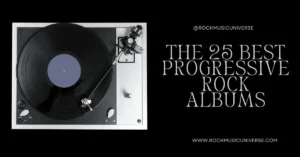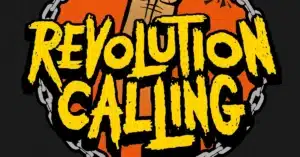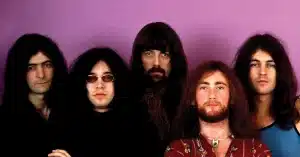Heartland Rock: The Soundtrack of American Dreams and Struggles
Origins and Definition
Heartland rock is a genre that emerged in the late 1970s and peaked during the 1980s, deeply rooted in the American experience. It combines elements of rock, folk, and country with a strong emphasis on storytelling. Often focusing on working-class struggles, small-town life, and the pursuit of the American Dream, heartland rock became the voice of the blue-collar worker, delivering tales of resilience, hardships, and hope.
Influenced by roots rock, folk rock, and country rock, heartland rock embodies a straightforward musical approach, often featuring anthemic melodies, ringing guitars, and lyrics that reflect the struggles and aspirations of everyday people. The genre is characterized by its no-frills production, earnest storytelling, and anthemic qualities that make it feel both personal and universal.
Key Artists and Albums
Several artists became synonymous with heartland rock, shaping its identity and impact on popular music.
Bruce Springsteen – The Boss of Heartland Rock
No discussion of heartland rock is complete without Bruce Springsteen, the most prominent figure in the genre. His albums, particularly Born to Run (1975), Darkness on the Edge of Town (1978), The River (1980), and Born in the U.S.A. (1984), captured the dreams and struggles of the American working class. Songs like “Thunder Road,” “Born to Run,” and “Dancing in the Dark” painted vivid pictures of escape, resilience, and disillusionment.
John Mellencamp – The Voice of Small-Town America
Formerly known as Johnny Cougar, John Mellencamp became a major force in heartland rock with songs about the struggles of rural America. His breakthrough album, American Fool (1982), included hits like “Jack & Diane” and “Hurts So Good.” Scarecrow (1985) and The Lonesome Jubilee (1987) continued his trend of social commentary, with tracks like “Small Town” and “Pink Houses” addressing middle-American struggles.
Tom Petty – The Storyteller of the Open Road
Although he blended several rock styles, Tom Petty contributed significantly to heartland rock. With his band The Heartbreakers, Petty created timeless tracks such as “Refugee,” “The Waiting,” and “I Won’t Back Down.” His music, especially on albums like Damn the Torpedoes (1979) and Full Moon Fever (1989), embodied the rebellious and hopeful spirit of heartland rock.
Bob Seger – The Blue-Collar Poet
A key figure in defining the sound of heartland rock, Bob Seger brought a mix of rock and soul influences. His anthems like “Night Moves,” “Against the Wind,” and “Turn the Page” resonated with audiences who saw their own lives reflected in his lyrics. Live Bullet (1976) and Stranger in Town (1978) were especially influential albums in the genre.
Other Notable Artists
While Springsteen, Mellencamp, Petty, and Seger are considered the core artists of heartland rock, several others contributed to the genre’s identity:
- Steve Earle – Blended country and rock in albums like Guitar Town (1986).
- John Fogerty – As the leader of Creedence Clearwater Revival and later a solo artist, Fogerty’s music echoed the themes of heartland rock.
- Bob Dylan – Though not exclusively a heartland rocker, Dylan’s storytelling deeply influenced the genre.
Themes and Lyrics
The lyrical themes of heartland rock set it apart from other rock subgenres. Instead of focusing on excess or rebellion, the genre speaks to the realities of working-class struggles, economic hardships, family values, and nostalgia for better times. Songs often explore:
- The pursuit of the American Dream (e.g., “Born to Run” by Bruce Springsteen)
- The struggles of the working class (e.g., “Pink Houses” by John Mellencamp)
- Longing for youth and lost opportunities (e.g., “Night Moves” by Bob Seger)
- Road life and freedom (e.g., “Runnin’ Down a Dream” by Tom Petty)
Heartland Rock and Social Commentary
Many heartland rock songs carry a strong political and social message, addressing issues like unemployment, economic decline, and urban decay. However, the genre does not always take an overt political stance; instead, it tells deeply personal stories that allow listeners to draw their own conclusions. Springsteen’s Born in the U.S.A. (1984), often misinterpreted as a patriotic anthem, is actually a critique of the treatment of Vietnam War veterans and working-class struggles.
Decline and Influence
By the early 1990s, heartland rock started to fade as grunge, alternative rock, and country rock revival gained popularity. However, its influence remains significant, particularly in Americana, alt-country, and modern folk rock. Artists like Jason Isbell, The Gaslight Anthem, and The War on Drugs continue to carry the torch of heartland storytelling in contemporary music.
Conclusion
Heartland rock is more than just a musical genre; it is a reflection of the American working-class experience. With its powerful storytelling, anthemic sound, and deeply relatable themes, it continues to resonate with listeners even decades after its peak. Whether through the anthems of Springsteen or the small-town chronicles of Mellencamp, heartland rock remains an enduring voice of the people.







